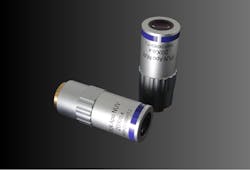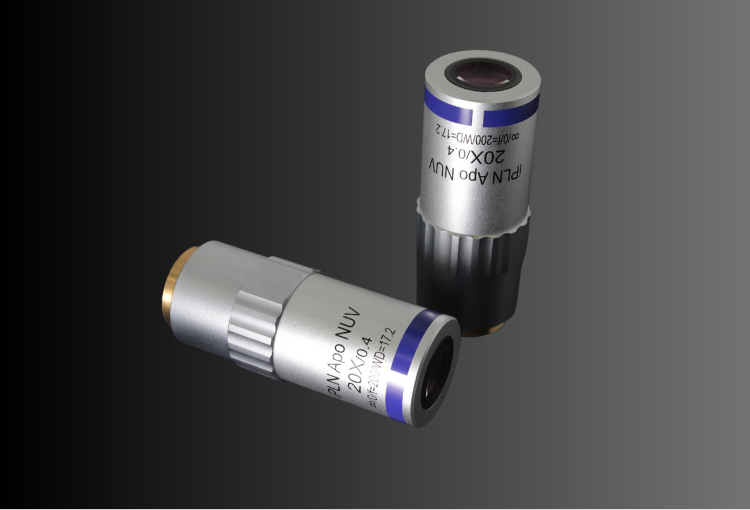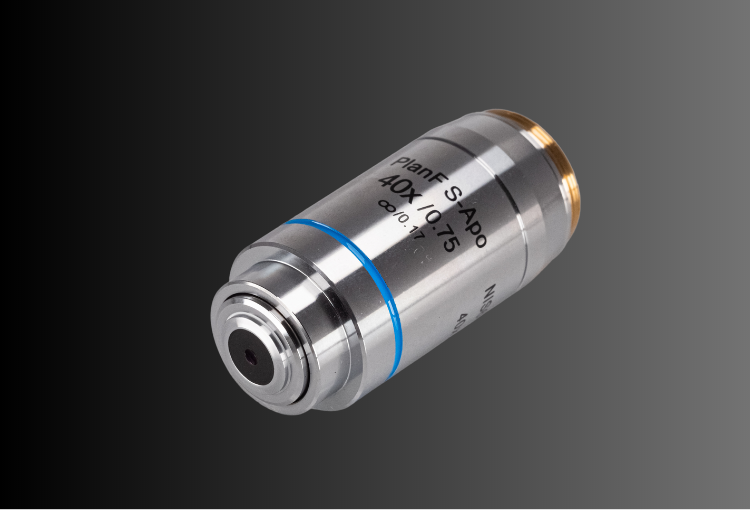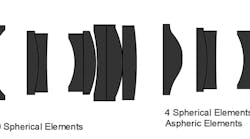Microscope Objective Lenses at Avantier
A microscope objective lens produces a real, magnified image of an object placed within the field of view. Before it is observed the image is then magnified again by the ocular lens, also known as the eyepiece.
Avantier is a premier manufacturer of high performance microscope objective lenses, and we produce a wide range of quality microscope objectives for applications ranging from research to industry to forensics and medical diagnostics. We carry may types of objectives in stock, including apochromat objectives, achromatic objectives, and semi apochromat objectives. We can also produce custom objectives designed to work as desired in your target spectral range.
Apochromats Lenses
Flat Field Super Achromatic Objective Lens
Significance of the Microscope Objective Lens
While a microscope is built of many parts, the cornerstone is in many ways the objective lens. The resolving power and total magnification power of the microscope as well as the quality of the final image all depend on the objective lens used.
Objectives are designed to magnify an object by a certain coefficient; from 4x (a scanning objective) to 40x (a high power objective) up to 100x for an oil immersion lens. For ultimate flexibility, a microscope is often equipped with up to four objectives on a rotating nosepiece or turret. If an objective lens has infinity-correction the magnification is equal to the reference focal length divided by the focal length of the objective.
The ultimate magnification power of a microscope can be calculated by multiplying the magnification power of the eyepiece by that of the objective lens. If an object is viewed through a 10x eyepiece and a 4x objective, the image produced will have been magnified 40x.
Types of Objectives
Based on aberration correction
- Achromatic objective lenses are the most economical objectives to produce and are designed with corrections for chromatic aberration in two wavelengths (blue and red) and spherical aberration in one (green). They typically consist of two lens doublets and a front lens. These lenses provide the best images when light is passed through a green interference filter.
- Plan achromat lenses are achromatic lenses with corrections for flat-field aberration.
- Semi-apochromat lenses, on the other hand, include several extra optical components and correct for a greater number of spherical aberrations. This enables semi-apochromat objectives to be manufactured with higher numerical aperture NA.
- Apochromats Lenses are the most sophisticated microscope objective lenses available and include the most aberration corrections. Their high resolving power means they are a good choice for research applications in which color photomicrography is required, and can be designed with a higher numerical aperture.
Based on system
- Reflective Objective Lenses are Microscope objective lenses that include two or more mirrors are called This type of objective typically boasts a long working distance and zero chromatic aberration, and is useful for FTIR spectroscopy applications.
- Refractive Objective Lenses are microscope lenses made of transparent materials like glass. They use refraction, not reflection, to focus light onto the specimen. These lenses consist of multiple lens elements that correct for optical aberrations and ensure high-quality imaging.
Based on immersion medium
- Oil-immersion Objective Lenses, while most lenses are designed to work with air between the objective and cover glass, a higher numerical aperture can sometimes be achieved with other substances such as special oil with a specific refractive index.
- Water immersion Objective Lenses use water as the immersion medium between the objective and cover glass. This allows for a higher numerical aperture, improving resolution and image quality in microscopy applications.
- Air immersion Objective Lenses are designed to work with air as the medium between the objective and cover glass. They are commonly used in standard microscopy setups and provide good resolution and image clarity.
- Glycerol immersion objective lenses utilize glycerol, a viscous liquid, as the immersion medium. Glycerol has a refractive index close to that of glass, enabling improved light collection and resolution. It is commonly used in specialized microscopy techniques where high-resolution imaging is required.
Please contact us to schedule a free consultation for your custom order.







